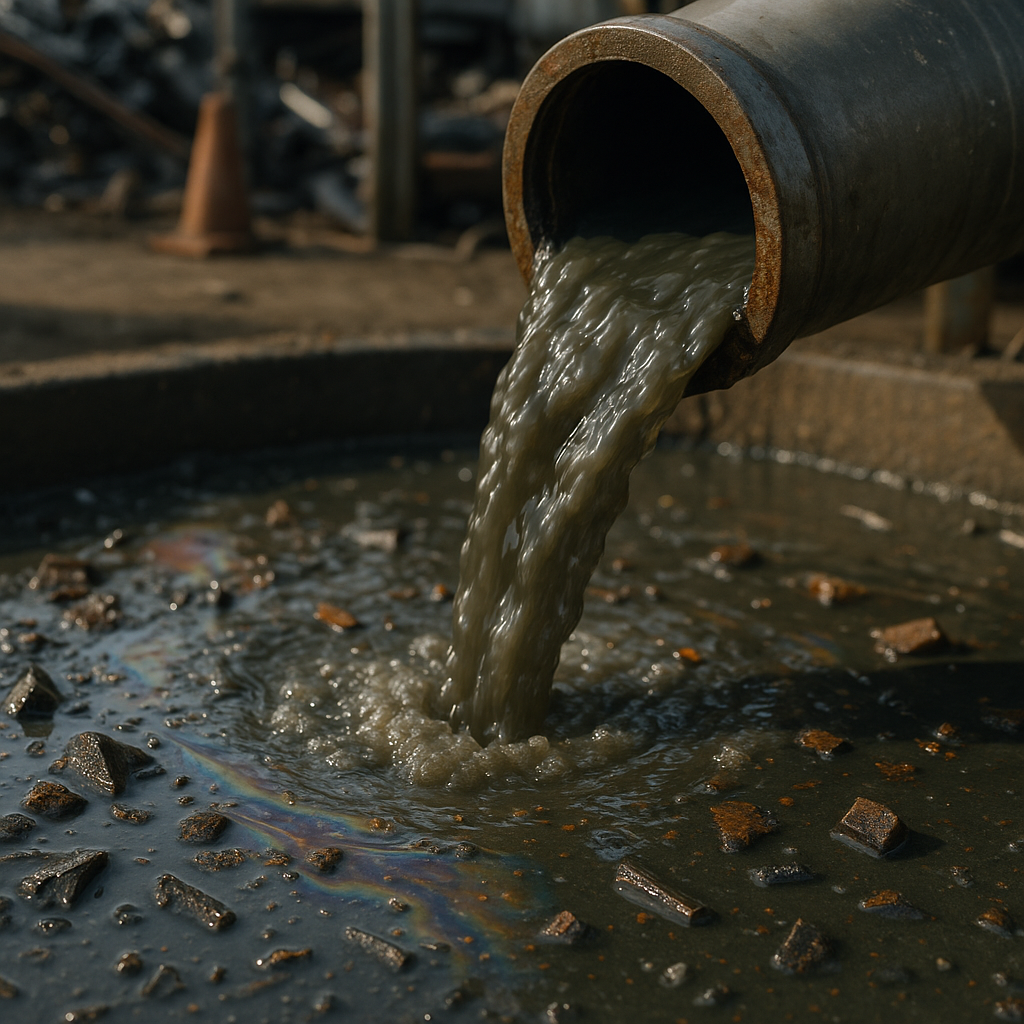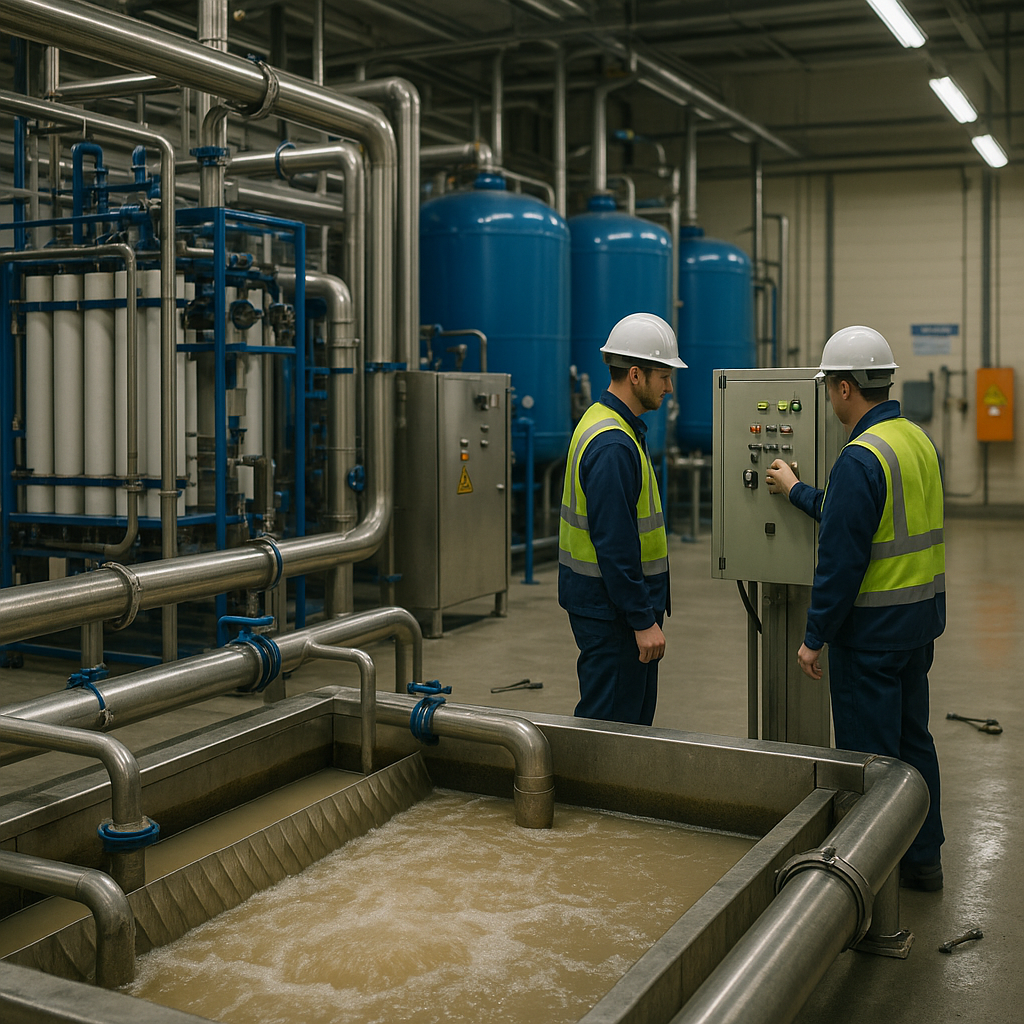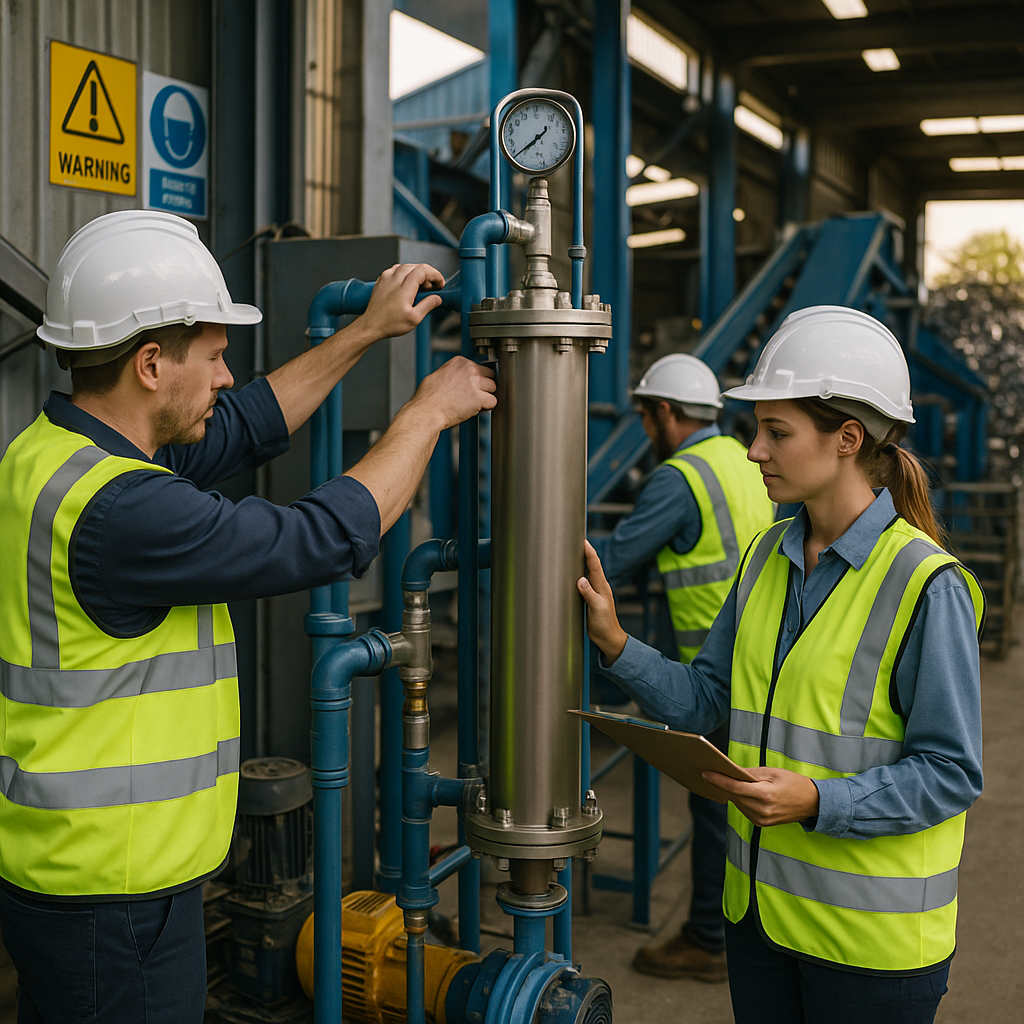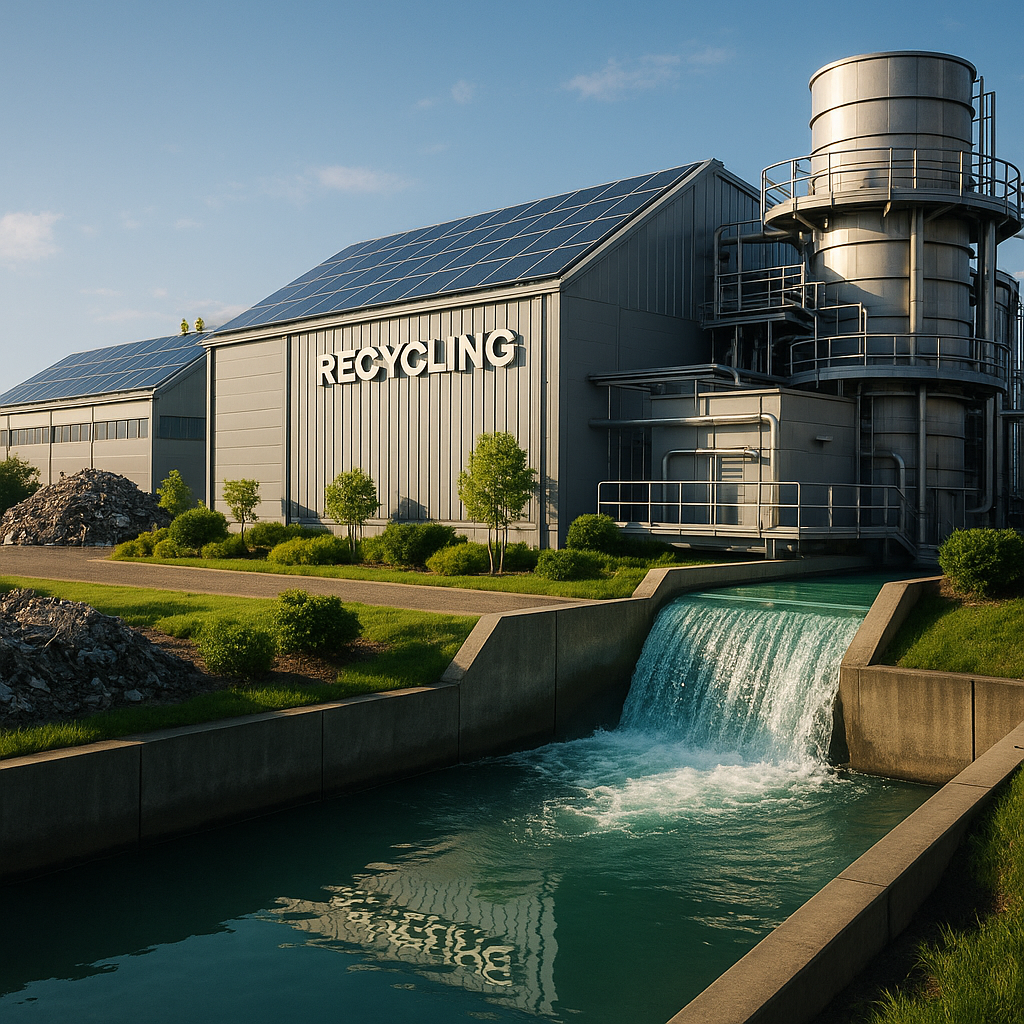5901 Botham Jean Blvd, Dallas, TX 75215
Learn the Importance of Wastewater Treatment in Metal Recycling
October 15, 2025Metal recycling facilities generate significant amounts of wastewater that contain various pollutants and contaminants requiring proper treatment. This wastewater often contains heavy metals like mercury, lead, and cadmium, which can severely impact ecosystems when released untreated. Without effective management, these toxins can contaminate soil and water sources, leading to long-term environmental damage.
The composition of wastewater in metal recycling operations varies widely based on the types of metals processed and the recycling methods used. Facilities handling aluminum produce different contaminants than those processing copper or steel. Similarly, processes involving chemical treatments generate wastewater with different properties than mechanical recycling methods.
Effective wastewater treatment is a critical environmental safeguard in the metal recycling industry. By implementing efficient treatment systems, facilities can remove harmful substances before water is discharged into local sewage systems or natural waterways. This not only ensures compliance with environmental regulations but also protects public health and preserves vital ecosystems for future generations.
What Are the Common Contaminants in Metal Recycling Wastewater?

Metal recycling facilities generate wastewater with numerous hazardous contaminants, stemming from various processing stages. If not properly treated, these pollutants pose significant environmental and health risks. Understanding these contaminants is essential for developing effective treatment strategies.
Heavy Metals
Heavy metals are among the most prevalent and concerning contaminants in metal recycling wastewater. These elements persist in the environment and can bioaccumulate in living organisms.
- Lead (Pb): Commonly found in battery recycling operations. Lead exposure can damage kidney function, disrupt mental development in children, and harm the central nervous system.
- Cadmium (Cd): Present in electronic waste and metal plating processes. Cadmium is highly toxic even at low concentrations, causing kidney disease and bone deterioration.
- Mercury (Hg): Found in electronic components and certain metal alloys. Mercury can damage the brain, heart, kidneys, lungs, and immune system.
- Chromium (Cr): Released during processing of stainless steel and chrome-plated materials. Hexavalent chromium can cause respiratory tract irritation, kidney damage, and is a known carcinogen.
- Nickel (Ni): Present in various alloys and electroplating operations. Nickel exposure can lead to skin irritation, asthma, and conjunctivitis.
- Copper (Cu): Abundant in electrical wiring and electronics recycling. While essential for nutrition, high copper levels can cause liver damage and gastrointestinal issues.
- Zinc (Zn): Common in galvanized metals. Excessive zinc exposure can lead to respiratory problems and metal fume fever.
Oils and Greases
Metal parts often contain lubricants, cutting oils, and hydraulic fluids that contaminate wastewater during recycling processes.
- Mineral Oils: Used in machinery and as cutting fluids. These can form films on water surfaces, preventing oxygen transfer.
- Synthetic Lubricants: More resistant to breakdown than natural oils and persist longer in the environment.
- Hydraulic Fluids: Often contain additives toxic to aquatic life.
Suspended Solids
Physical particles that remain suspended in wastewater can cause various environmental problems.
- Metal Shavings: Tiny fragments from cutting and grinding operations.
- Dust Particles: Created during the crushing and processing of scrap metals.
- Sludge Materials: Semi-solid residues containing concentrated pollutants.
Chemical Solutions
Various chemical compounds are used or generated during metal recycling processes.
- Acids: Including sulfuric, hydrochloric, and nitric acids used in metal cleaning and processing. These can drastically lower pH and damage aquatic ecosystems.
- Alkaline Solutions: Used for degreasing and cleaning metals. These solutions can raise pH to harmful levels.
- Organic Compounds: Solvents used for cleaning and degreasing metal parts. Many are toxic to aquatic life and some are potential carcinogens.
- Chlorinated Compounds: Often found in degreasers and cleaning agents. These can persist in the environment, causing long-term harm.
Process-Specific Contaminants
Certain contaminants arise from specific metal recycling operations.
- Coolants: Used in cutting and grinding operations; contain biocides and other additives harmful to aquatic life.
- Flux Residues: Chemicals used to remove oxides during soldering and welding. These often contain potentially harmful compounds.
- Paints and Coatings: May contain lead, chromium, and other heavy metals, as well as organic solvents.
- Radioactive Materials: Recycling facilities may occasionally encounter radioactive metals from industrial equipment, posing serious health risks.
Without proper treatment, these contaminants can seep into groundwater, contaminate soil, harm aquatic ecosystems, and potentially enter the food chain. The complex mixture of these pollutants makes wastewater treatment at metal recycling facilities particularly challenging, often requiring multi-stage processes to meet environmental standards.
| Contaminant | Source | Environmental Impact | Health Risk |
|---|---|---|---|
| Lead (Pb) | Battery recycling operations | Can disrupt ecosystems and persist in the environment | Damages kidneys, affects brain and nervous development |
| Cadmium (Cd) | Electronic waste, metal plating | Accumulates in plants affecting agricultural productivity | Causes kidney disease, bone deterioration, and cancer |
| Mercury (Hg) | Electronic components, metal alloys | Persists in aquatic ecosystems affecting marine life | Leads to brain, heart, kidney, and nervous system damage |
| Chromium (Cr) | Stainless steel processing, chrome plating | Contaminates soil and water, affecting terrestrial and aquatic life | Respiratory tract irritation, known carcinogen |
| Nickel (Ni) | Alloys, electroplating operations | Environmental persistence, can bioaccumulate in organisms | Causes skin irritation and respiratory issues |
| Copper (Cu) | Electrical wiring, electronics recycling | Can lead to toxic levels in aquatic systems | Excess can cause liver damage |
| Zinc (Zn) | Galvanized metals | Interferes with aquatic life oxygen supply | Respiratory problems, metal fume fever |
| Oils and Greases | Lubricants, hydraulic fluids | Forms films on water surfaces; disrupts oxygen transfer | Can be toxic to aquatic life |
| Suspended Solids | Metal shavings, dust particles | Reduces light penetration affecting aquatic photosynthesis | Contains concentrated pollutants affecting health |
| Chemical Solutions | Acids, alkaline solutions, organic compounds | pH alteration in aquatic systems, toxic persistence | Potential carcinogens, very toxic to organisms |
| Process-Specific | Coolants, flux residues | Specialized impacts depending on substances involved | Varied; from irritation to serious health risks depending on the compound |
What Are the Key Wastewater Treatment Technologies for Metal Recycling?

Effective wastewater treatment is crucial in metal recycling operations. Processing metals introduces various contaminants into water systems, creating a complex mixture that requires specialized treatment. Several technologies excel in treating metal-laden wastewater, each offering distinct advantages for specific contaminants.
Electrocoagulation
Electrocoagulation (EC) is a robust treatment method using electrical current and sacrificial metal electrodes, usually iron or aluminum, to generate coagulating agents in situ. As current flows through the electrodes, metal ions are released into the wastewater, forming hydroxide flocs that capture contaminants.
Functioning like a microscopic magnet and glue system, the metal electrodes dissolve during electricity flow, releasing positively charged ions that attract negatively charged particles. These particles aggregate, becoming large enough to settle out of the water. EC is particularly effective for:
- Removing colloidal particles that cause turbidity
- Capturing dissolved heavy metals such as lead, chromium, and zinc
- Breaking down emulsified oils and separating them from water
- Addressing both organic and inorganic contaminants
EC offers significant advantages, including reduced sludge production, minimal chemical requirements, and effectiveness across various pollutants. Its compact footprint makes it ideal for facilities with limited space.
Chemical Precipitation
Chemical precipitation is widely used for removing heavy metals from wastewater. By adding specific chemicals, dissolved metals react to form insoluble solids that can be physically separated.
Similar to salt crystals forming when seawater evaporates, introducing precipitating chemicals like lime (calcium hydroxide), caustic soda (sodium hydroxide), or sodium sulfide alters solubility, forcing metals to convert from dissolved to solid state.
Chemical precipitation is valuable for:
- Removing high concentrations of dissolved metals such as copper, zinc, and nickel
- Treating wastewater with multiple metal contaminants
- Creating stable, disposable solids from dissolved metals
- Allowing for metal recovery and potential reuse
Its effectiveness depends largely on maintaining optimal pH conditions. While generating more sludge compared to some alternatives, its reliability and scalability make it an industry standard.
Granular Activated Carbon Adsorption
Granular Activated Carbon (GAC) adsorption uses highly porous carbon with ample surface area to capture contaminants through physical and chemical attraction. A single pound of GAC can have a surface area equivalent to 100 acres, providing numerous binding sites for pollutants.
Think of GAC as a microscopic apartment building with millions of rooms, each capable of trapping a contaminant molecule. As wastewater passes through a GAC system, organic compounds and some metals are drawn into these pores and held through various attractive forces.
GAC adsorption excels at:
- Removing organic compounds affecting color, taste, and odor
- Capturing some dissolved metals, particularly mercury, lead, and chromium
- Polishing water after primary treatment methods
- Providing consistent treatment quality with minimal complexity
A notable benefit of GAC is its potential for regeneration through thermal or chemical processes, making it sustainable and cost-effective for long-term operations.
Zero Valent Iron Treatment
Zero Valent Iron (ZVI) technology uses elemental iron (Fe0) particles to treat wastewater through reduction reactions and adsorption. Pure iron particles act as electron donors, transforming many metal contaminants into less soluble or toxic forms.
ZVI, functioning like a chemical transformer, converts harmful substances by donating electrons. For instance, when toxic hexavalent chromium encounters ZVI, the iron donates electrons to convert the chromium to a less toxic trivalent form, precipitating out of solution.
ZVI is especially effective for:
- Reducing toxic hexavalent chromium to less hazardous trivalent chromium
- Removing arsenic, lead, and mercury through chemical reduction
- Treating chlorinated organic compounds often found alongside metals in wastewater
- Providing long-term treatment capacity with a simple design
Nanoscale ZVI enhances this technology by increasing surface area for reactions, though standard granular ZVI remains cost-effective for many applications.
Selecting the Right Technology
Choosing the best wastewater treatment technology for metal recycling depends on factors like contaminant types and concentrations, discharge requirements, available space, and budget. Often, combining technologies offers an effective solution, with each method addressing specific wastewater challenges.
A comprehensive treatment system may employ electrocoagulation for primary removal of emulsified oils and suspended solids, followed by chemical precipitation to capture dissolved metals, with a final polishing stage using granular activated carbon to tackle residual contaminants.
As regulatory standards tighten and water conservation becomes more critical, these technologies will keep evolving, providing more efficient solutions for the metal recycling industry.
How Can Metal Recycling Facilities Implement Effective Wastewater Management?

Metal recycling facilities face distinct challenges in managing wastewater. Processing metals produces effluents containing heavy metals, oils, suspended solids, and other contaminants, necessitating proper treatment prior to discharge. Implementing effective wastewater management ensures regulatory compliance, supports environmental sustainability, and can reduce operational costs.
Assessing Wastewater Characteristics
The first step in effective wastewater management is understanding the specific materials involved. Metal recycling wastewater contains a complex mixture of contaminants, which vary according to facility operations.
Before choosing treatment methods, facilities should conduct comprehensive analyses of their wastewater to identify:
- Types and concentrations of heavy metals (copper, zinc, lead, chromium)
- pH levels and chemical characteristics
- Presence of oils and organic compounds
- Suspended solids content
- Biological oxygen demand (BOD) and chemical oxygen demand (COD)
This analysis is crucial for designing a treatment system tailored to the specific contaminants in the facility’s wastewater.
Selecting Appropriate Treatment Technologies
No single method can address all contaminants in metal recycling wastewater. A multi-step approach incorporating several technologies is usually required. Selection should consider wastewater composition, discharge requirements, space, and budget.
Physical Treatment Methods
Physical treatment processes are the first line of defense for removing solid particles and oils:
- Screening and filtration: Removes large debris and suspended solids
- Oil/water separation: Separates oils and hydrocarbons using gravity or coalescence techniques
- Sedimentation: Allows heavier particles to settle out of the wastewater
- Adsorption: Uses materials like activated carbon to capture dissolved contaminants
Chemical Treatment Methods
Chemical processes are particularly effective for heavy metal removal and pH adjustment:
- Chemical precipitation: Converts dissolved metals into insoluble compounds that can be removed as sludge
- pH neutralization: Adjusts wastewater pH to optimal levels for treatment and discharge
- Coagulation and flocculation: Enhances removal of fine particles by causing them to clump together
- Advanced oxidation: Breaks down complex organic compounds that are difficult to remove by other methods
Advanced Treatment Technologies
For facilities facing stricter discharge limits or seeking to recycle water, advanced treatment options may be necessary:
- Membrane filtration: Includes ultrafiltration, nanofiltration, and reverse osmosis systems that can remove dissolved contaminants
- Ion exchange: Selectively removes metal ions from solution by exchanging them with less harmful ions
- Electrocoagulation: Uses electrical current to remove contaminants without requiring additional chemicals
Implementing a Closed-Loop Water System
Many progressive facilities are adopting closed-loop water systems to minimize wastewater discharge. These systems treat and recycle wastewater for reuse within the facility, reducing freshwater consumption and wastewater generation.
Key components of an effective closed-loop system include:
- Multi-stage filtration to remove contaminants of different sizes
- Chemical treatment systems to maintain water quality
- Storage tanks for treated water
- Regular monitoring to ensure water meets reuse quality standards
Developing a Comprehensive Management Plan
Effective wastewater management extends beyond treatment technologies and requires a structured approach that encompasses:
- Regular monitoring and testing to ensure treatment systems function properly
- Preventive maintenance schedules to avoid system failures
- Staff training programs on operating treatment systems and handling chemicals
- Documentation and record-keeping of testing results, maintenance activities, and discharge data
- Emergency response procedures for spills or system failures
Ensuring Regulatory Compliance
Facilities must navigate complex regulations governing wastewater discharge. These regulations vary by location but typically include:
- Discharge permits specifying allowable contaminant levels
- Regular reporting requirements to regulatory agencies
- Periodic inspections by environmental authorities
- Potential penalties for non-compliance
To ensure compliance, facilities should:
- Stay informed about current and upcoming regulations
- Conduct regular compliance audits of treatment systems
- Maintain open communication with regulatory authorities
- Invest in upgrades as necessary to meet changing requirements
Cost Considerations and ROI
Implementing effective wastewater management requires investment but can yield significant returns through:
- Reduced water purchase costs through recycling and reuse
- Lower discharge fees and treatment costs
- Avoidance of fines for non-compliance
- Enhanced reputation as an environmentally responsible operation
When evaluating options, consider both initial capital costs and ongoing operational expenses, including energy, chemical use, maintenance, and labor.
Continuous Improvement Strategies
Effective wastewater management is an ongoing process of improvement. Facilities should:
- Regularly review system performance against goals
- Stay updated on new technologies and best practices
- Seek opportunities to reduce wastewater at the source
- Benchmark performance against industry standards
- Set goals for water conservation and quality improvement
By taking a comprehensive approach to wastewater management, metal recycling facilities can achieve regulatory compliance, reduce environmental impact, and potentially realize cost savings through improved efficiency and resource recovery. The key lies in understanding specific wastewater characteristics, selecting appropriate technologies, implementing robust systems, and committing to continuous improvement.
Conclusion: The Future of Wastewater Treatment in Metal Recycling

As environmental regulations become increasingly stringent worldwide, effective wastewater treatment in metal recycling has become essential rather than optional. The metal recycling industry faces growing pressure to reduce its environmental impact while maintaining operational efficiency. Forward-thinking companies are already implementing advanced treatment technologies that not only meet current standards but also anticipate future regulatory requirements.
Water conservation is crucial as climate change affects water security globally. The metal recycling sector, previously a significant water consumer, is now adopting closed-loop systems to maximize water reuse. These circular approaches reduce freshwater intake and prevent contaminants from entering local ecosystems. Promising advancements include electrochemical metal recovery systems, which extract valuable metals from wastewater streams, offering new revenue opportunities while addressing environmental challenges.
For businesses seeking to stay ahead of regulatory changes and implement sustainable water management solutions, contact Okon Recycling at 214-717-4083. Our experts can help develop customized wastewater treatment strategies that protect both your business interests and our shared environment.
